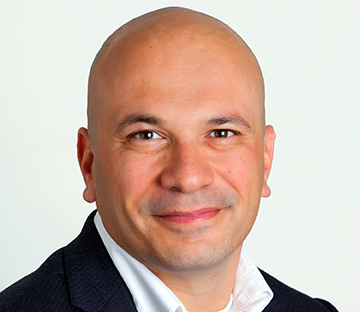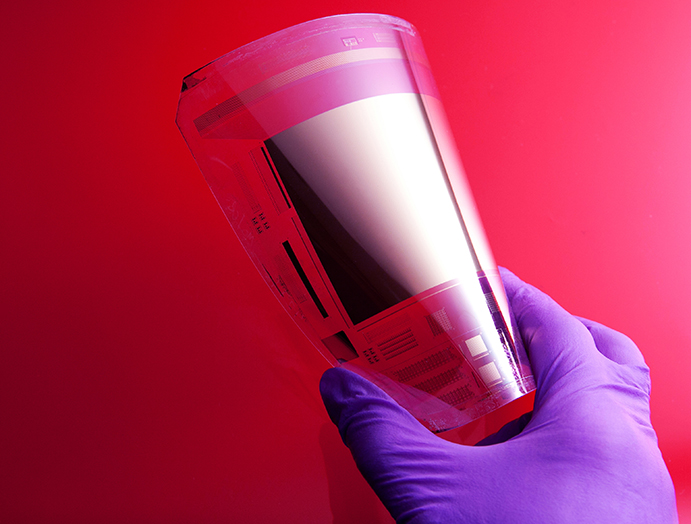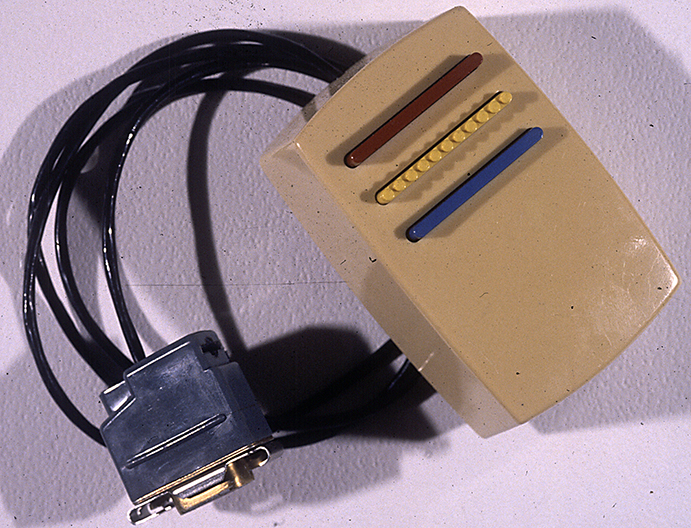 The interface of humans and technology is a major focus for PARC’s chief executive
The interface of humans and technology is a major focus for PARC’s chief executive
A relatively small area near San Francisco has arguably been responsible for shaping more of the way that we live our everyday lives than any other. Silicon Valley, as it is known, was the birthplace of the commercial transistor, the microprocessor and the technologies they depend on: everything from the personal computer, the beginnings of the Internet, and the current generation of portable computing and smartphones, all had their genesis in the area. The office equipment company Xerox was one of the pioneers of Silicon Valley, establishing its corporate R&D division, then known as Xerox PARC, on the valley edge near to Palo Alto and Stanford University in the 1970s, among the first large companies to set up there.
PARC has not been Xerox’s captive R&D division for nearly two decades, being spun off into an independently run although wholly owned subsidiary of Xerox in 2002. But on a visit to the UK recently, PARC chief executive Tolga Kurtoglu told The Engineer that the heritage of the company is still probably the main thing that most people outside its immediate community know about it. “There’s a very strong legacy and brand with Xerox PARC, going back to our formation and often people make the assumption that it’s still the case [that we are not an independent company],” he said. “We wanted to come to the UK to raise awareness and build some relationships. It’s a market we want to grow. We already have commercial partners in the UK and some academic institutions we collaborate with, and we’re looking to continue those and build new ones.”

The early days of PARC were characterised by developments that brought information technology into offices, and were particularly concerned with how people work with computers. “A lot of technology we take for granted today was partially or fully invented at PARC.” Kurtoglu explained. “That ranges from the graphical user interface to the very concept of the personal computer; Ethernet, which we developed in 1973, was a big success and had a huge impact on Xerox; object-oriented programming was another; aspects of the mouse around 1970 and the frame of ‘ubiquitous computing’ was coined at PARC.”
The interface between humans and technology is still a major focus of PARC’s research, even though the business structure has changed. Kurtoglu estimates that slightly less than half of the company’s research projects are now Xerox-related. “Today, PARC is a combination of computer scientists, people with advanced engineering degrees, IP professionals and a team of commercial people and social scientists focused on developing technology options for a wide variety of clients,” Kurtoglu said. “We’ve moved to working for a wide variety of customers and different areas of deep science, such as for the US government agencies, DARPA and its energy department equivalent, ARPA-E, but we also work for customers from start-ups all the way through to Fortune 500 and Global 1000 companies.”
IP generation
Open innovation is a major strategy for PARC but, as Kurtoglu concedes, this is a term that notoriously means something different to almost every institution that uses it. For him, it simply means that the company collaborates closely and widely with a very wide range of organisations, some commercial, some governmental, and some academic. “Another aspect is that our business relies heavily on IP generation, and transferring that IP into a set of technologies that can be commercialised and implemented in a practical way takes a variety of different forms. Our basic definition is working with a set of clients who most of the time have a pretty strong internal R&D capability to develop new technologies and work with them to do the knowledge transfer and technology transfer.”
Apart from a small office in Tokyo staffed mainly by commercial departments and some social scientists, all of PARC’s activities are in Palo Alto. “We have about 190 people in the technical staff, 85 per cent with PhDs, and they have backgrounds in computer science, aerospace and chemical engineering, electrical engineering and materials science,” Kurtoglu said. “Alongside them, we have theoretical and applied scientists in chemistry and physics, and our technical team also includes social scientists with PhDs in ethnography, anthropology and social studies.” IP specialists, commercial teams and support staff account for another 50 or so employees at the site, he added.
The work these teams undertake mirrors many of the concerns found across industry at the moment, while also harking back to the company’s origins in man-machine interface; but while in the 1970s and 1980s the machine tended to be a computer on somebody’s desk, today it is just as likely to be a piece of industrial automation. One of PARC’s largest research areas is concerned with energy technologies and batteries, Kurtoglu said. “We look at next-generation battery systems and battery management systems with applications in smart cities, smart grids and things of that nature.” Other groups are concerned with customisable sensors, which may have applications in industrial automation and autonomous vehicles. “We are also working around advanced manufacturing and digital manufacturing, Industry 4.0 and the application of machine-learning and AI,” he added, the last of these being a particular speciality of Kurtoglu’s and the subject of much of his postgraduate studies after qualifying in mechanical engineering. “If I were to summarise the work that we do, the majority, if not all, of our clients are at the intersection of the physical and the digital. That’s what we see as the next wave of technology; more and more real-time data that’s becoming prominent and available, no matter what industry and application you pick. And then more and more real-time interaction between the physical and digital worlds.”

PARC’s facilities are organised around four main laboratories, two specialising in hardware (one, with systems and the other with materials, devices and electronics); the other two labs work in software (one in systems sciences and the other in interaction and analytics). In general, Kurtoglu said, where PARC works in hardware it is of the type where software is essential to its operation and research has a very strong tendency to be interdisciplinary in nature. “A big part of our value proposition is the ability to put these teams together to solve tough technological problems.”
Sometimes this work depends on taking a new approach to sensing and bringing analytics to existing problems. One example given by Kurtoglu is a new type of fibre-optic sensor for lithium-ion batteries that is able to detect changes in the structure of the cell materials on a much more fundamental level than conventional sensors that can only monitor parameters such as temperature, voltage and current. “We didn’t ask the question about how can we write or develop better analytics algorithms for batteries; we asked what can we sense differently and what hardware technology might enable so that we can really have a breakthrough to the development of how its management works with the analytics layered on top,” he said.
Industrial automation
Industrial automation is one reason that PARC employs so many social scientists, as well as physical scientists and engineers. While Kurtoglu admits that there are very real fears that bringing increasing amounts of robotics and AI into manufacturing may threaten jobs, he believes the future of work is more likely to lie in changing the nature of the jobs that humans do, with far more cooperation between humans and robots as technologies such as additive manufacturing become more widespread in factories. “My speculation is that the next-generation jobs would not just take those very repetitive tasks and automate them; it would be concerned with how you put computational agents together with robots and AI, and put them with humans in collaborative ways to solve increasingly complex tasks together. That intersection is very important for us. Our social scientists specialise in understanding how technology is used or can be used, and they do user studies and work closely with our technology teams to understand what technology might mean for the end users.”
Kurtoglu also studied additive manufacturing (AM) as a postgraduate, and has continued his interest at PARC. “One of the most significant challenges with AM is the processes are not as characterised as traditional technologies. We’ve been building systems that allow AM models to be converted into computational models that can predict the physical outcome of different AM techniques. That’s a way to help the design side by embedding those process capabilities into intelligent design tools to help them to catch up with the potential of the various techniques, so they can feed into the next CAD/CAM tools.”
CareerCV
Tolga Kurtoglu, chief executive, PARC Corporation
Education
1999 Bachelor’s degree in mechanical engineering, Middle East Technical
University, Ankara, Turkey
2001 Master’s degree in mechanical engineering, Carnegie Mellon University, US
2007 PhD in mechanical engineering, University of Texas at Austin
Career highlights
2001-2003 Mechanical design engineer, Dell
2003-2004 Systems lead engineer, Dell
2006-2010 Research scientist, NASA Ames Research Centre. Kurtoglu developed computer-aided tools to design human machine interfaces
2010-2014 Research scientist/area manager, PARC Inc. Managing teams in computational sciences, artificial intelligence, and automation
2011-2016 Programme director, digital and design manufacturing, PARC Inc. Developing software solutions for virtual product development and digital manufacturing markets
2014-2016 Vice-president, director of system sciences lab. Overseeing PARC’s R&D investments for Xerox and managing its innovation portfolio
January 2017 Appointed chief executive of PARC Inc










UK Enters ‘Golden Age of Nuclear’
Anybody know why it takes from 2025 to mid 2030's to build a factory-made SMR, by RR? Ten years... has there been no demonstrator either? Do RR...